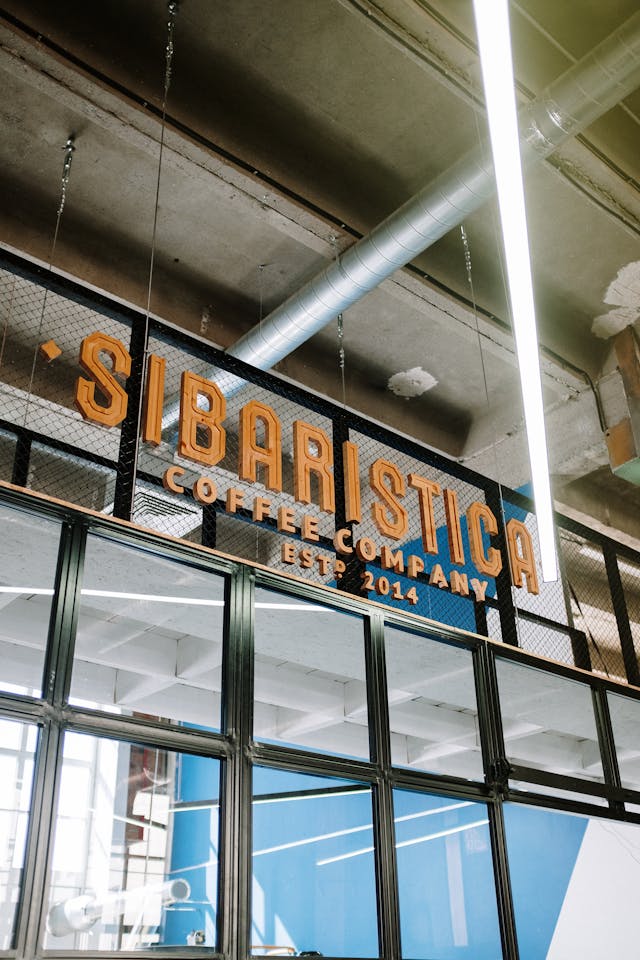5 Red Flags: Is Your Business Name Headed for USPTO Rejection? Avoid Brand Legal Risk Now!
Your guide for 5 Signs Your Business Name Might Get Rejected by USPTO.

Ever dreamt of a brilliant business name, only to have it crash and burn at the USPTO? You're not alone. In the high-stakes world of branding, a staggering 75% of trademark applications face initial rejection or significant challenges, with many never making it past the preliminary review. This isn't just a minor setback; it's a costly, time-consuming ordeal that can derail your entire brand launch before it even begins. Imagine investing months in branding, design, and marketing, only to discover your carefully chosen name is a legal landmine.
Your business name is more than just a label; it's the cornerstone of your brand identity, your legal protection, and your market recognition. But what if that cornerstone is cracked before it's even laid? This comprehensive guide will equip you with the knowledge to spot the critical red flags that often lead to USPTO name rejection, helping you navigate the treacherous waters of trademark law with confidence. You'll learn the psychological underpinnings of memorable names, discover proven naming strategies, understand common pitfalls, and gain a complete framework for validating your brand name. Most importantly, we'll show you how powerful tools like NameBot can be your ultimate ally, pre-checking your potential names to help avoid these costly errors. Ready to secure your brand's future? Create your own breakthrough name.
The Psychology Behind Successful Names: More Than Just a Word
A great business name doesn't just sound good; it's a carefully crafted psychological tool. It influences perception, memory, and even purchasing decisions. Understanding these principles is your first step towards a name that not only resonates with your audience but also stands a better chance of USPTO approval.
Cognitive Fluency: Easy to Process, Easy to Remember
Cognitive fluency refers to the ease with which information is processed. Simpler, more pronounceable names are processed more quickly by the brain, leading to higher recall and positive associations. Research shows that brands with higher naming fluency tend to perform better in recall tests and are perceived as more trustworthy. Think of names like Apple, Nike, or Google – simple, yet profound.
Brandability and Memorability: Standing Out in a Sea of Sameness
Brandability encompasses several factors: distinctiveness, pronounceability, brevity, and relevance. A highly brandable name is unique enough to stand out, easy to say and spell, short enough to be memorable, and ideally, hints at your offering without being overly descriptive. Memorability is closely tied to distinctiveness. A name that is too generic or similar to others simply gets lost in the noise.
Emotional Resonance: Connecting with Your Audience
Effective names evoke positive emotions or associations. They tell a story, even if subtly. Consider names like "Pampers" (comfort, care) or "Amazon" (vastness, variety). This emotional connection fosters deeper loyalty and recall. While abstract, this also indirectly influences USPTO success; a name that is clearly distinctive and unique in its emotional appeal is less likely to be seen as descriptive or generic.
Here’s a snapshot of how psychological principles correlate with brand success:
| Psychological Principle | Impact on Brand Success | Relevance to USPTO Approval | Example Brands | Key Takeaway |
|---|---|---|---|---|
| Cognitive Fluency | Higher recall, trust | Distinctiveness, less descriptive | Zoom, Slack | Simple, easy to say/spell |
| Brandability | Market differentiation | Avoids confusion/genericity | Spotify, Netflix | Unique, memorable, adaptable |
| Emotional Resonance | Deeper customer loyalty | Distinctiveness, less descriptive | Peloton, Calm | Evokes positive feelings/concepts |
| Semantic Content | Clarifies offering | Avoids being misleading | QuickBooks, HubSpot | Communicates value clearly |
Proven Naming Strategies: Crafting Your Distinctive Identity
Choosing the right naming strategy is fundamental to creating a memorable brand that can also secure trademark protection. Here are several effective strategies, paired with examples of how they've been successfully implemented, and how they help avoid common USPTO pitfalls.
1. Abstract/Invented Names
These are names that have no inherent meaning, created purely for branding purposes. Think of 'Kodak' or 'Xerox.' They are highly distinctive, making them excellent candidates for trademark protection due to their inherent uniqueness. This strategy virtually eliminates the risk of being found generic or merely descriptive.
- Examples: Verizon, Spotify, Lyft, Airbnb
- Why they work: Maximum distinctiveness, strong trademark potential, global applicability. Requires significant marketing investment to build brand recognition.
2. Suggestive Names
Suggestive names hint at a product's function or a brand's benefits without explicitly describing them. They evoke an image or quality. Examples include 'Microsoft' (software for microcomputers) or 'Netflix' (internet flicks). This strategy balances memorability with a hint of functionality, often strong for trademarking if not too suggestive.
- Examples: Pinterest (pin interest), Evernote (everything note), Groupon (group coupon)
- Why they work: Communicates core value subtly, often memorable, good trademark strength if not overly descriptive.
3. Compound Names
Compound names combine two or more words (or parts of words) to create a new, often unique name. 'FaceBook' or 'YouTube' are classic examples. This strategy can create distinctive names that are still intuitive and easy to understand, often leading to good trademark standing because the combination creates a unique identity.
- Examples: FedEx (Federal Express), PayPal (pay pal), SnapChat (instant chat)
- Why they work: Combines familiarity with novelty, can be highly distinctive, often intuitive.
4. Metaphorical/Mythological Names
Drawing from mythology, literature, or common metaphors can imbue a brand with rich, pre-existing associations. 'Nike' (Greek goddess of victory) or 'Hermes' (messenger god) leverage powerful imagery. This strategy offers strong distinctiveness and often carries deep emotional resonance, making them excellent for trademark protection.
- Examples: Oracle (wisdom, prophecy), Amazon (vastness, abundance), Pandora (all-gifted)
- Why they work: Conveys deep meaning, often memorable, strong distinctiveness.
5. Experiential Names
These names focus on the customer experience or the feeling associated with using the product/service. Think 'Zoom' for its speed and clarity of communication. This strategy can create highly engaging and memorable names that are often distinctive enough for trademarking because they describe an outcome or feeling rather than a product feature.
- Examples: Slack (less effort, easier communication), Peloton (group effort, cycling), Calm (meditation app)
- Why they work: Focuses on user benefit, strong emotional connection, can be highly distinctive.
| Naming Strategy | Distinctiveness (USPTO) | Memorability | Marketing Effort | Domain Cost (Avg.) | Key Benefit |
|---|---|---|---|---|---|
| Abstract/Invented | High | Moderate | High | High | Maximum trademark protection |
| Suggestive | Medium-High | High | Medium | Medium-High | Hints at benefits, good recall |
| Compound | Medium-High | High | Medium | Medium | Combines familiarity with uniqueness |
| Metaphorical/Myth. | High | High | Medium | High | Rich associations, strong emotional appeal |
| Experiential | Medium-High | High | Medium | Medium | Focuses on user outcome, engaging |
Common Naming Mistakes to Avoid: The 5 Signs Your Business Name Might Get Rejected by USPTO
The USPTO (United States Patent and Trademark Office) rejects thousands of trademark applications every year. Understanding the most common grounds for refusal is crucial. Here are the five major red flags that could lead to your business name being rejected, directly correlating with USPTO trademark refusal reasons:
Sign 1: Your Name is Merely Descriptive or Generic
This is arguably the most common reason for USPTO name rejection. A "merely descriptive" mark simply describes a characteristic, quality, function, purpose, or ingredient of the goods or services. A "generic" term is the common name for the goods or services themselves. Neither can serve as a trademark because they don't distinguish your goods/services from others.
- Example of Merely Descriptive: "Speedy Delivery" for a courier service, "Best Coffee" for a coffee shop.
- Example of Generic: "Computer" for a computer manufacturer, "Shoe Store" for a shoe retailer.
- Why it's a problem: If a name is merely descriptive, competitors need to be able to use it to describe their own products. If it's generic, it's just the common word for the product/service. Neither can function as a source identifier.
- Actionable Advice: Strive for distinctiveness. Instead of "Fresh Juice," consider "JuiceBurst" or "VitaFlow." Use suggestive, arbitrary, or fanciful names that require imagination to connect to your product/service. While a descriptive name can acquire distinctiveness over time (secondary meaning), this is a lengthy and expensive process.
Sign 2: Your Name is Too Similar to an Existing Trademark (Likelihood of Confusion)
This is another significant trademark refusal reason. The USPTO will reject your application if your proposed mark is too similar to an existing registered mark and the goods or services are related in such a way that consumers would likely be confused about the source of the goods/services. This is known as a "likelihood of confusion."
- Example: "Pep-si" for soft drinks would likely be refused due to similarity to "Pepsi." "Nike Shoes" would be refused if someone tried to register "Nyke Footwear."
- Why it's a problem: Consumer confusion undermines the entire purpose of trademark law, which is to prevent deception about the source of goods/services.
- Actionable Advice: Conduct thorough trademark searches before falling in love with a name. This includes searching the USPTO database and common law uses (e.g., state registrations, business directories, web searches). Consider variations in spelling, pronunciation, meaning, and commercial impression. NameBot offers preliminary trademark pre-checks to help you identify potential conflicts early. Generate and analyze your name.
Sign 3: Your Name is Primarily a Surname or Geographically Descriptive
The USPTO generally refuses registration for names that are primarily merely a surname (e.g., "Smith's Appliances" if Smith is a very common last name and not distinctive otherwise) or primarily geographically descriptive (e.g., "New York Bagels" if your bagels are, in fact, from New York).
- Example of Surname: "Johnson's Widgets" if Johnson is a common surname and the name doesn't have other distinctive elements.
- Example of Geographically Descriptive: "California Wines" for wines made in California.
- Why it's a problem: These types of names typically don't distinguish one source from another unless they have acquired "secondary meaning" (i.e., consumers associate the name primarily with your specific goods/services, not just the surname or location).
- Actionable Advice: Avoid using common surnames alone. If you must use a surname, combine it with a distinctive design element or another unique word (e.g., "Ford Motor Company"). For geographical names, only use them if your goods/services do not originate from that location and the name is arbitrary or fanciful in context (e.g., "Sahara Hotels" not necessarily located in the Sahara Desert).
Sign 4: Your Name Contains Prohibited Matter (Deceptive, Scandalous, Disparaging)
Certain categories of marks are absolutely barred from registration, regardless of distinctiveness or likelihood of confusion. This includes names that are deceptive, scandalous, immoral, or disparaging.
- Example of Deceptive: "Silk Cotton" for fabric that contains no silk.
- Example of Scandalous/Immoral: Names that are vulgar, offensive, or promote illegal activities.
- Example of Disparaging: Names that denigrate individuals or groups based on race, religion, gender, etc.
- Why it's a problem: These prohibitions serve public policy interests and are designed to protect consumers and maintain public order.
- Actionable Advice: Exercise caution with creative or edgy names. Ensure your name is truthful about your product/service and adheres to generally accepted standards of decency. When in doubt, consult with a trademark attorney.
Sign 5: Your Name Uses Flags, Insignia, or Marks of Governmental Entities
Federal statute prohibits the registration of marks that consist of or comprise the flag or coat of arms or other insignia of the United States, or any state or municipality, or any foreign nation, or any simulation thereof.
- Example: A business name that prominently features the American flag or the Seal of the President.
- Why it's a problem: These are protected symbols that should not be monopolized for commercial gain.
- Actionable Advice: Steer clear of any national, state, or municipal symbols, even if modified. While some exceptions exist for purely decorative or background use, it's a high-risk area for brand legal risk.
The Complete Name Validation Framework: From Idea to Legal Protection
Choosing a name isn't just about creativity; it's about rigorous validation. A systematic approach helps you identify and mitigate risks early. NameBot's comprehensive framework integrates internal checks, market testing, and crucial legal/digital validation.
Step 1: Internal Validation (The SPARK Test)
Before you even think about the outside world, put your name through an internal filter. Use the SPARK test:
- Simple: Is it easy to say, spell, and remember?
- Pronounceable: Can people easily say it without stumbling?
- Alluring: Is it engaging and memorable? Does it evoke positive feelings?
- Relevant: Does it align with your brand's values, mission, or offering (without being descriptive)?
- Keepable: Is it unique and distinctive enough for trademarking? Does it have longevity?
If your name struggles with any of these, it's back to the drawing board.
Step 2: Market Testing (The 5x5 Method)
Once your name passes internal muster, it's time to test it with your target audience. The 5x5 method is a quick, insightful approach:
- Show 5 people: Present your name to 5 members of your target demographic.
- Ask 5 questions:
- What's your initial impression of this name?
- What kind of business or product do you imagine this name belongs to?
- How does it make you feel?
- Is it easy to remember and pronounce?
- Does it sound similar to any other businesses or products you know?
Collect their feedback. Look for consistency, positive associations, and absence of confusion or negative connotations.
Step 3: Legal and Digital Validation
This is where the rubber meets the road. Even the most brilliant, market-tested name can fail here if it's already taken.
- Domain Name Availability: Check for .com, .net, .org, and relevant new TLDs. A strong online presence often relies on owning your exact-match domain. NameBot integrates domain availability checks into its naming process.
- Social Media Handle Availability: Secure your name across key platforms (e.g., Facebook, Instagram, Twitter, LinkedIn, TikTok). Consistency is key for brand building.
- Preliminary Trademark Search (USPTO & Common Law): This is paramount to avoid trademark refusal reasons and brand legal risk. Conduct a knockout search on the USPTO's TESS database (Trademark Electronic Search System) and broaden your search to include state registries, business directories, and extensive web searches to identify common law uses. NameBot provides initial trademark checks, flagging potential conflicts early on, saving you significant legal fees and time. Generate and analyze your name with pre-checks.
Legal and Domain Strategy: Securing Your Brand's Future
Don't let your perfect name be an unregistered liability. A robust legal and domain strategy is essential for long-term brand protection and scalability. This goes beyond just checking availability; it's about strategic investment.
Domain Name Strategy
Your domain name is your digital address. Owning the primary .com is almost always the gold standard, but don't overlook alternatives. Consider:
- .com: The undisputed king. If available, prioritize it. Budget: High (often requires buying from current owner if premium).
- New TLDs (e.g., .io, .tech, .co, .ai): Growing in popularity, especially for tech and specific industries. Can offer more availability and often lower initial costs. Budget: Medium.
- Country-Code TLDs (e.g., .co.uk, .de): Essential if your business has a strong geographical focus. Budget: Low-Medium.
- Variations and Defensive Registrations: Consider registering common misspellings or alternative extensions to protect your brand from cybersquatters and confusion. Budget: Varies, depends on number of registrations.
Budget Recommendations:
- Startup (Bootstrap): Focus on a strong .com, even if it's a slightly less ideal name, or a strong alternative TLD (e.g., .co) if .com is impossible. Expect $10-$100 annually for registration, potentially $500-$5,000+ for a premium name acquisition.
- Growth Stage: Secure your primary .com and key new TLDs. Begin defensive registrations. Expect $1,000-$10,000+ for premium acquisitions.
- Established Brand: Comprehensive domain portfolio, including defensive registrations and international TLDs. Budget for ongoing portfolio management and potential acquisitions.
Trademark Strategy
This is where you legally protect your name, logo, and slogans. Don't skip this step!
- Comprehensive Search: While NameBot offers preliminary checks, a professional, comprehensive trademark search conducted by a legal professional is critical. This search goes beyond identical matches to identify potentially confusingly similar marks across all relevant goods and services.
- Application Process: File your application with the USPTO. Be precise about the goods and services your mark will cover. This is a complex legal process where small errors can lead to USPTO name rejection or substantial delays. Consider working with a trademark attorney.
- Use in Commerce: For a trademark to be registered, you must show you're actively using it in commerce in connection with your goods or services. Intent-to-use applications are possible, but actual use must follow.
- Maintenance: Trademarks aren't forever. They require periodic renewals and declarations of continued use. Failure to maintain can lead to abandonment of rights.
NameBot's Role: NameBot's integrated search functionality provides an invaluable first line of defense against trademark refusal reasons. By instantly checking for direct conflicts and suggesting similar terms, it significantly reduces your initial brand legal risk and guides you towards names with higher registrability potential, allowing you to focus your legal budget on comprehensive searches for a shortlist of viable names.
Naming Success Metrics: How Do You Know You Chose Well?
Choosing a great name isn't a one-time event; it's an ongoing journey. Once your brand is launched, how do you measure its impact and ensure your name is working for you? Here are key performance indicators (KPIs) to track:
- Brand Recall and Recognition: Conduct surveys to measure how easily consumers remember your name (unaided recall) and how quickly they recognize it when prompted (aided recall). A high-performing name should show strong recall over time.
- Pronunciation Accuracy: Monitor customer service interactions or social media mentions. Are people consistently mispronouncing or misspelling your name? This can indicate a lack of cognitive fluency.
- Search Engine Visibility (SEO): Does your name rank well for direct searches? Is there significant competition for your name in organic search? A unique name helps improve direct search visibility.
- Social Media Engagement: Are your social media handles easily found and consistently used? Is there positive sentiment associated with your brand name online?
- Domain Traffic (Direct): An increase in direct traffic (people typing your URL directly) can indicate strong name recognition and memorability.
- Customer Feedback: Actively solicit feedback on your brand name. Do customers find it appealing, trustworthy, and relevant? This qualitative data is invaluable.
- Trademark Infringement Incidents: Ideally, you want this number to be zero. A well-protected, distinctive name minimizes the likelihood of others infringing on your mark, and conversely, minimizes your risk of infringing on others.
100 Data-Driven Business Name Ideas
Crafting a name that is both memorable and legally defensible requires balancing creativity with strategic insight. Here are example business names designed to illustrate different strategies and minimize the risk of USPTO rejection, demonstrating how distinctiveness can be achieved.
Tech & Software
- ByteFlux: (Compound/Suggestive) Combines tech terms for a modern, fluid feel. Distinctive. No direct descriptive claims.
- SynapseLink: (Compound/Suggestive) Evokes connection and intelligence. Distinctive, not generic.
- EchoSphere: (Metaphorical/Suggestive) Implies broad reach and clear communication. Unique imagery.
- Vectra Labs: (Invented/Suggestive) Sounds scientific and forward-thinking. Distinctive for a lab or tech company.
Wellness & Health
- AuraWell: (Compound/Suggestive) Blends spiritual/energetic concept with wellness. Distinctive.
- Vital Bloom: (Experiential/Suggestive) Focuses on the positive outcome of health. Unique pairing.
- Zenith Care: (Suggestive) Implies peak health or the highest standard of care. Distinctive enough.
- Kinetic Flow: (Experiential/Suggestive) Evokes movement and effortless well-being. Not generic.
Creative & Design
- Canvas Quill: (Compound/Metaphorical) Blends traditional art tools, evoking craftsmanship. Unique imagery.
- Pixel Forge: (Compound/Suggestive) Suggests creation of digital visuals. Distinctive and creative.
- Muse Collective: (Metaphorical) Implies inspiration and collaborative creativity. Distinctive.
- Luminary Arts: (Suggestive) Conveys brightness, brilliance, and artistic endeavor. Not descriptive.
Food & Beverage
- Flavor Sprout: (Suggestive/Compound) Implies natural, fresh, and growing flavors. Distinctive.
- Crimson Spoon: (Arbitrary/Suggestive) Creates a unique, intriguing image. Not descriptive or generic.
- Brew Haven: (Compound/Suggestive) Suggests a safe, inviting place for brews. Distinctive.
Conclusion: Your Name, Your Legacy, Protected.
Your business name is the foundation of your brand's future, and protecting it from USPTO name rejection is not just a legal formality but a strategic imperative. By understanding the common pitfalls—from generic descriptors and confusing similarities to surnames and deceptive claims—you significantly reduce your brand legal risk and enhance your chances of trademark success. Remember, a name that's simple, distinctive, memorable, and legally clear is your most powerful asset.
Don't leave your brand's destiny to chance. Leverage the insights from this guide and the power of tools like NameBot to conduct crucial preliminary checks. Invest wisely in legal validation. Your journey to a protected, powerful brand name starts here. Ready to find the name that truly represents your vision and stands the test of legal scrutiny? Start building your brand with NameBot today!
Схожі статті



